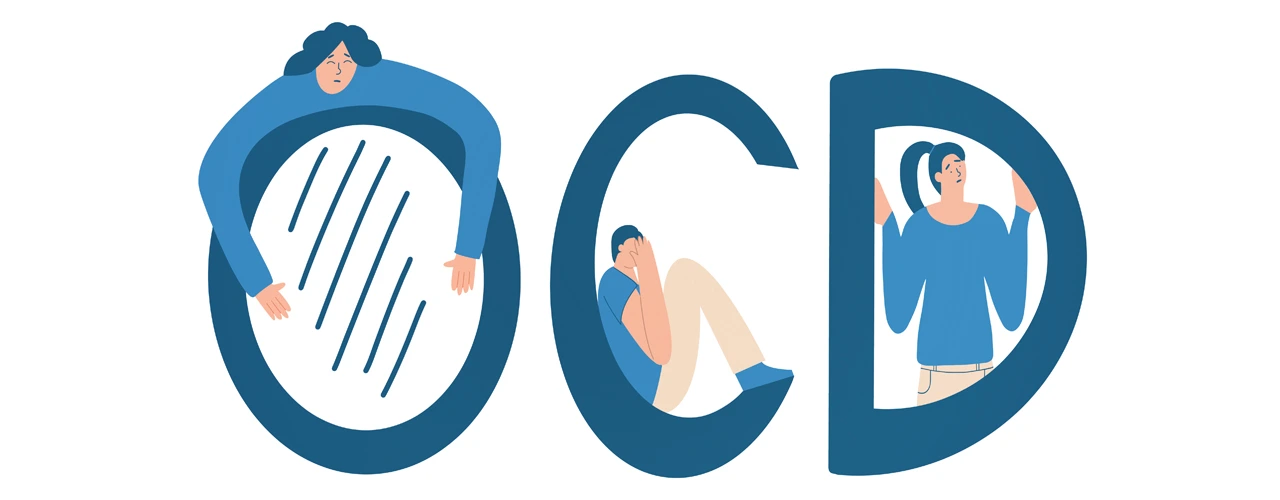Obsessive-Compulsive Disorder (OCD) is a mental health condition that affects nearly 0.93% of Canadians aged 15 and older, about 1 out of 100 people. The lifetime prevalence is even higher, ranging from 1.6% to 2.3% (roughly 1 in 50 adults). While talking about ADHD vs. OCD, OCD is often confused with ADHD due to overlapping challenges like intrusive thoughts and difficulty focusing, the conditions are distinct. ADHD involves attention and impulse regulation, whereas OCD centers on obsessions and compulsions. Understanding OCD and its impact, including links with depression and anxiety, is crucial, especially when considering professional support such as psychotherapists in Toronto.
What Is Obsessive Compulsive Disorder?
Obsessive Compulsive Disorder (OCD) is a mental health condition where individuals experience recurring, unwanted thoughts (obsessions) and repetitive behaviours or mental acts (compulsions). These behaviours are performed in an attempt to reduce anxiety or prevent something bad from happening, but they often interfere with daily life. a Many people choose to consult psychotherapists in Toronto, who can provide effective treatment approaches tailored to individual needs to gain better understanding and managing these challenges.
Common Obsessive-Compulsive Disorder Symptoms
While OCD looks different from person to person, there are common signs that may suggest someone is struggling with the disorder. Symptoms are usually divided into obsessions and compulsions.
Obsessions: Recurrent and Intrusive Thoughts
Obsessions are unwanted thoughts, images, or urges that cause distress. Some common examples include:
- Fear of contamination (e.g., germs, dirt, chemicals).
- Intrusive thoughts of harming oneself or others.
- Intense need for symmetry, order, or exactness.
- Disturbing sexual or religious thoughts.
- Excessive doubt and fear of making mistakes.
Compulsions: Repetitive Behaviours or Mental Acts
Compulsions are actions performed to try to reduce the anxiety caused by obsessions. Common compulsions include:
- Excessive hand washing, cleaning, or sanitizing.
- Repeatedly checking (locks, appliances, personal safety).
- Arranging or ordering objects in a specific way.
- Counting, tapping, or repeating words silently.
- Seeking reassurance from others to reduce doubt.
It is also important to note that OCD often co-occurs with depression and anxiety, which can intensify symptoms and make daily life even more challenging.
How OCD Affects Daily Life
People living with OCD may spend hours each day caught in obsessive-compulsive disorder symptoms, which can impact work, school, and relationships. The cycle of obsessions and compulsions often leads to high levels of stress, exhaustion, and isolation.
When to Seek Help
If you or someone you care about is struggling with obsessive compulsive disorder, reaching out to a mental health professional is an important step. Effective treatments—such as cognitive-behavioural therapy (CBT), exposure and response prevention (ERP), and psychodynamic exploration to uncover unconscious associations. can help manage symptoms and improve quality of life.
Frequently asked questions
What are the Risk Factors for OCD?
Risk factors for OCD include genetics, brain chemistry, childhood trauma, personality traits like perfectionism, and stressful life events. Early intervention from professionals can help manage symptoms effectively.
At what age does OCD begin?
OCD often begins in childhood, adolescence, or early adulthood, typically between ages 8 and 25. Early recognition of symptoms and support from resources like So You Need Therapy improves outcomes.
Is OCD inherited?
OCD has a genetic component, meaning it can run in families. While not guaranteed, inherited traits may increase risk. So You Need Therapy highlights environmental triggers alongside genetic vulnerability.
How is OCD diagnosed?
OCD is diagnosed through psychological assessments, clinical interviews, and evaluation of intrusive thoughts and compulsive behaviors. Mental health professionals assess severity, duration, and impact on daily functioning before confirming diagnosis.
























































